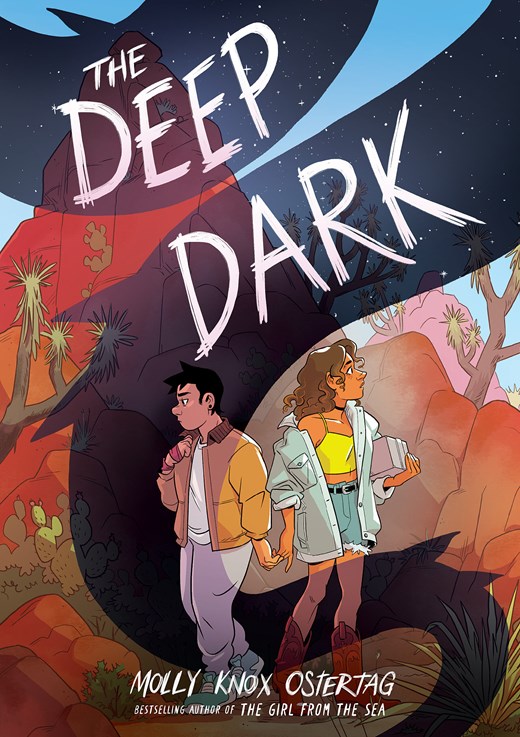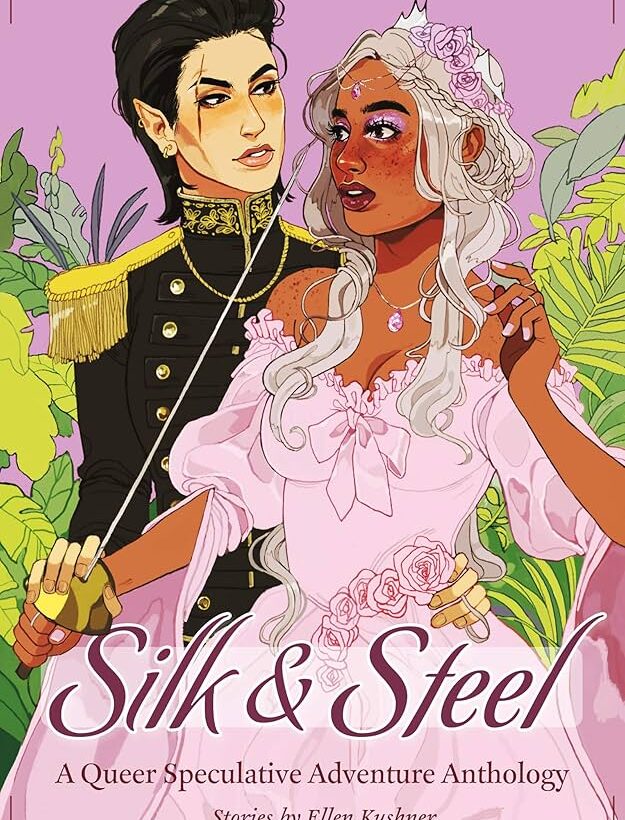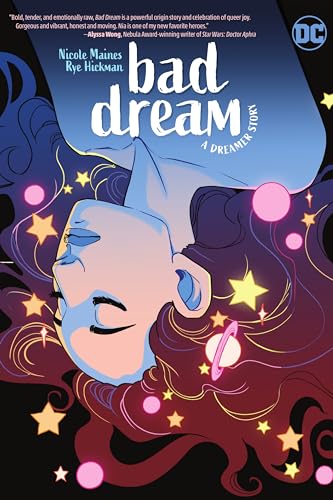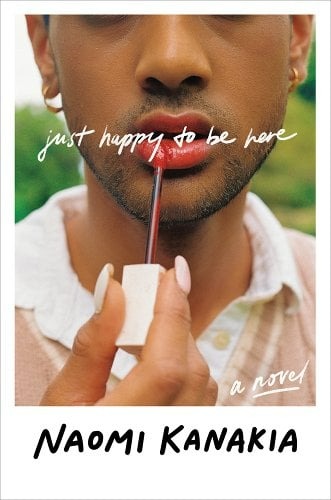When Lilith, Sash, and Abraxa were teenagers in the late 90s, they ran a video game corporation together. They never actually sold a video game, but they worked on an incredibly ambitious text-based (ASCII) game together. Sash was the leader, the idea person who held everyone else to exacting standards. Lilith struggled to design gameRead More
Avenging Your Own Murder: Volatile Memory by Seth Haddon Review
Seth Haddon’s sci-fi debut Volatile Memory (out July 22, 2025) is one of the best novellas I’ve read in a while. The book follows Wylla, a trans woman, as she tries to live her life as a scavenger. She, like other scavengers, goes after bounties and searches for important items to sell in order to earn credits.Read More
Queer, Revelatory Joy in The Deep Dark by Molly Knox Ostertag
Already a fan of Molly Knox Ostertag’s The Girl from the Sea, I had a good feeling about the weighty tome that is The Deep Dark. Friends, this poignant graphic novel delivered and then some. It’s like someone translated the sensation of waiting for the other shoe to drop and described the steps someone would take toRead More
Three Hope-Filled Sapphic Graphic Novels
I appreciate when coming-of-age stories show people continuing to learn and grow through college and beyond, and this month, I read three graphic novels in that vein: two college stories and one memoir. All of these stand-alone books feature adults but are appropriate for young adult readers, and all of them are lighthearted. Bunt! StrikingRead More
Surprise and Delight Yourself with Silk & Steel: A Queer Speculative Adventure Anthology
This review is long overdue, considering how much I adore Silk and Steel: A Queer Speculative Adventure Anthology. Published in 2020 and edited by Janine A. Southard, this beautiful collection of seventeen stories contains “big names and bold new voices” (full author list in tags). The book features warriors and gentlewomen and centers queer women’s strength—andRead More
A Dream Introduction to Nia Nal: Bad Dream by Nicole Maines and Rye Hickman
Buy this from Bookshop.org to support local bookstores and the Lesbrary! On October 14, 2018, transgender actor and activist Nicole Maines made history by appearing as Nia Nal/Dreamer, the first transgender superhero on TV, in Supergirl. She has since gone on to pen Dreamer’s comic debut in the DC Pride #1 in 2021 and Dreamer’s mainline DC continuityRead More
Who is Worthy of Survival at the End of the World? On the Edge of Gone by Corinne Duyvis
Buy this from Bookshop.org to support local bookstores and the Lesbrary! I want to preface this with that I read this for my Bi Book Club and it turns out the bisexual character is a supporting one, not the main one. So I will focus this review on that relationship. This was a really goodRead More
Creating Utopia in Love After the End edited by Joshua Whitehead
“Tomorrow will be kinder,” I whisper as I am swept into the rushing river of my dreams. —”The Ark of the Turtle’s Back” by jaye simpson Love After the End: An Anthology of Two-Spirit and Indigiqueer Speculative Fiction, edited by Joshua Whitehead, is a follow up to the anthology Love Beyond Body, Space, and Time. TheseRead More
Identity in Transition: Us by Sara Soler
Buy this from Bookshop.org to support local bookstores and the Lesbrary! Growing into one’s queer identity is often more a journey of discovery than a destination, and loving someone through the discovery phases takes one on the journey as well. Us by Sara Soler is a graphic memoir of love in motion. It follows twoRead More
A Trans Teen Finds Her Words: Just Happy to Be Here by Naomi Kanakia
Buy this from Bookshop.org to support local bookstores and the Lesbrary! Tara is the first trans girl to attend Ainsley Academy, an all-girls school. She finds it hard to fit in, especially considering that she’s also one of the few students of color. One place she does feel like she belongs is the Sibyls, anRead More
- 1
- 2
- 3
- …
- 8
- Next Page »







